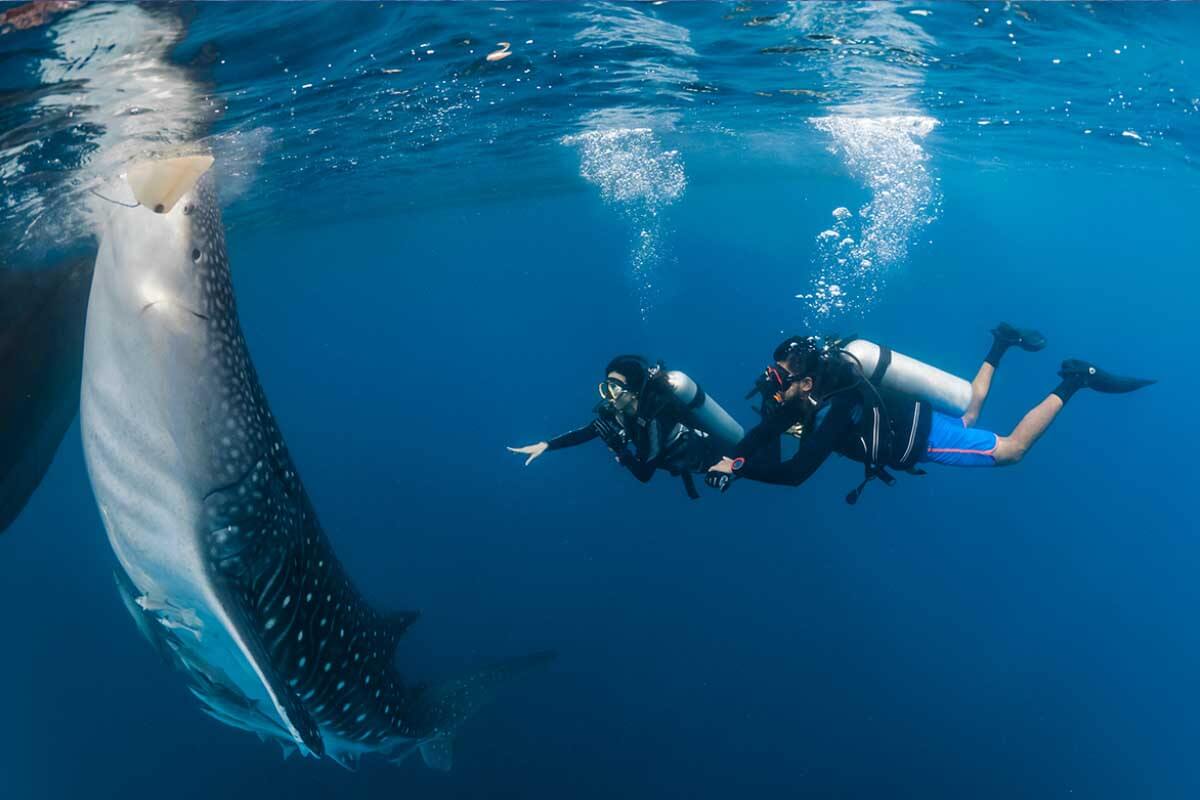
Coming face-to-face with a whale shark while scuba diving is one of the most awesome underwater encounters a diver can have – here’s ten of the best places in the world to see whale sharks while diving
Whale sharks (Rhincodon typus) are the largest fish ever known to have existed. In fact, with a maximum length of more than 10m (the longest ever accurately measured was 18.8m in length), they are the largest animals alive today that aren’t actually whales.
Even juveniles are larger than most sharks that divers encounter, and meeting a fully-grown adult would be intimidating if it weren’t for the fact that whale sharks are slow-moving, inquisitive and rather amiable creatures.
There are certain places in the Earth’s oceans where whale sharks gather in numbers. This mostly appears to be for the purposes of feeding, where they gorge on blooms plankton and fish eggs. Often the groups are mostly made up of young males; others are more mixed, with some gatherings reported to include pregnant females, suggesting that breeding grounds may be near by.
Some gatherings may be for mating purposes, but only one location in the world has reported sighting whale sharks in the act of mating. The largest known aggregation has seen nearly 1,000 individuals gather together – but nobody really knows why. Despite years of research, we still know very little about the largest fish in our oceans – but we know they are important, and we know that whale shark tourism helps to protect the animals from being hunted to extinction.
Here’s ten of the best places for divers and snorkellers to see whale sharks…
1. NINGALOO, WESTERN AUSTRALIA
Ningaloo, a reef complex off the western coast of Australia is one of the most established locations for whale shark spotting, with divers and snorkellers enjoying close encounters since the 1980s.
Whale sharks are attracted to Ningaloo by the abundant source of food generated by mass coral spawning events which occur in March each year. Up to 500 individual animals have been recorded taking advantage of the nutrient-rich waters, which in turn generates a huge influx of tourists who come to watch the whale sharks gather.
A 2018-19 study commissioned by the Department of Biodiversity, Conservation and Attractions found that more than AU$11.5 million (£6.5 million) in revenue is generated as a direct result of whale shark tourism, with another AU$12.5 million (£7.1 million) in travel and accommodation while in the region. Peak time for visiting is generally around May.
In 2019, a spotter pilot took the first known images of whale shark mating behaviour while flying over the gathering.
2. THE GULF OF TADJOURA, DJIBOUTI
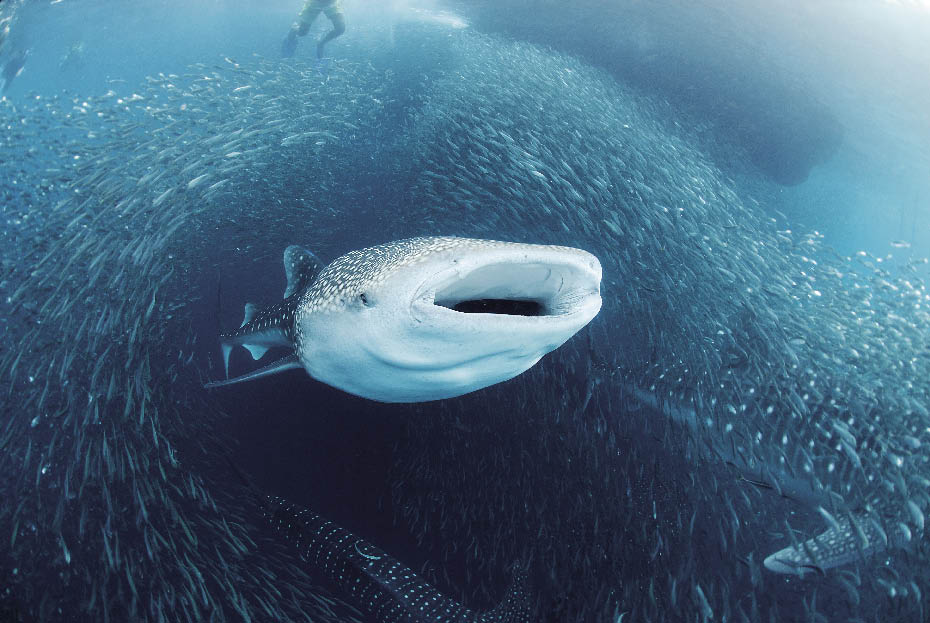
This aggregation mostly attracts young male fish to seasonal plankton blooms that occur every year around January. Some of the individuals have been measured at just 2.5m in length, which scientists estimate to be as young as six months to one year old.
Newborn whale sharks are around 50-60cm in length, but there is little reliable data about growth rates. With a mean size for the fish off Djibouti at 3.7m, the aggregation is something of a developmental area for whale sharks.
3. AL-LITH, SAUDI ARABIA, RED SEA
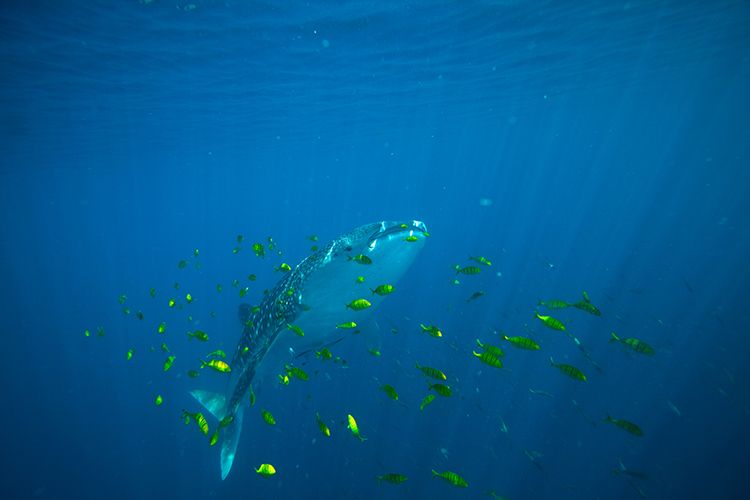
A whale shark gathering at an isolated reef off the coast of Saudi Arabia was discovered in 2014 by researchers from the Woods Hole Oceanographic Institution based at King Abdullah University of Science and Technology.
The aggregation consists of hundreds of young whale sharks – which, unusually, appears to be a a 50/50 mix of juvenile males and females. The reason for the gathering is something of a mystery, as the tiny organisms on which whale sharks feed were mostly absent when the whale sharks were present.
4. GLADDEN SPIT, BELIZE
For 10 days after the full moon during the months of March, April, May and June, thousands of snappers, groupers and other species spawn around Gladden Spit at the eastern end of the Belize Barrier Reef, attracting whale sharks which come to feast on the glut of fish eggs clouding the otherwise clear blue water.
Whale sharks were named a protected species in 2003, placing Belize at the historical forefront of whale shark conservation. Nowadays, only officially licensed operators are allowed conduct whale sharks tours, and the number of boats and time that swimmers can interact with the sharks is strictly regulated to protect the animals.
5. ISLA MUJERES, QUINTANA ROO, MEXICO
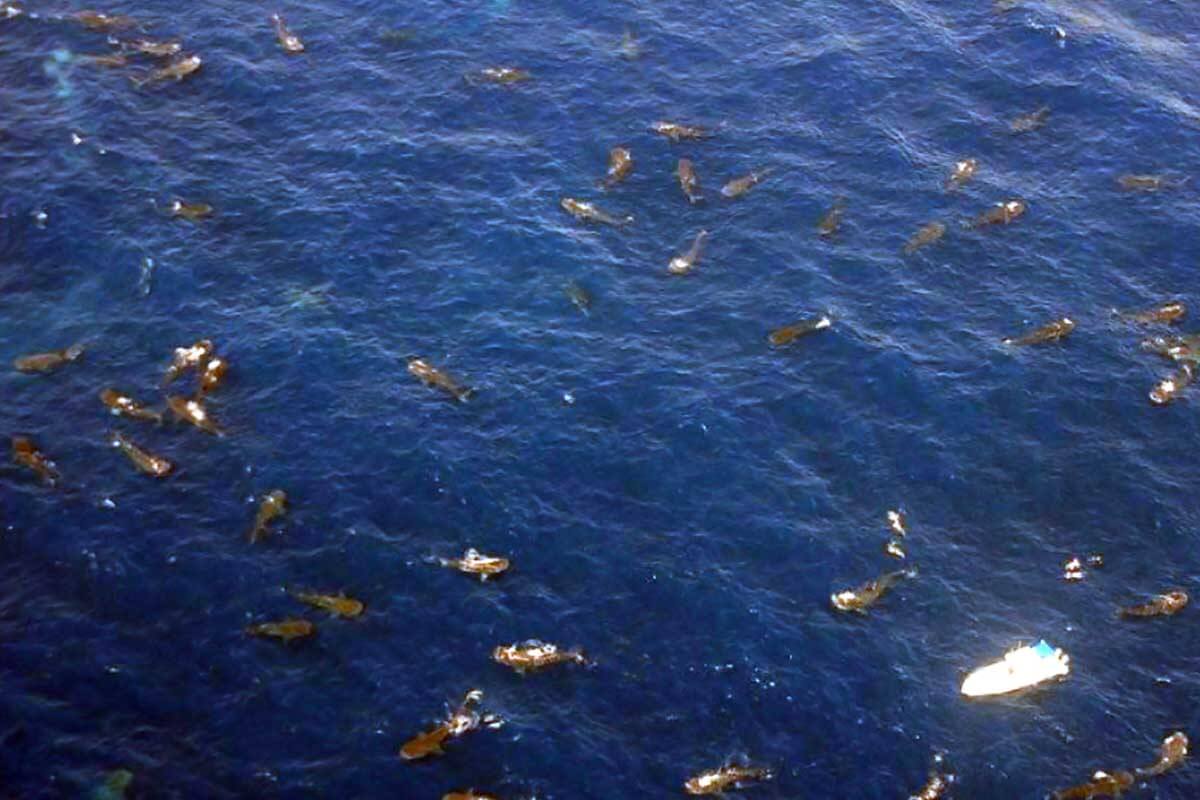
By sheer weight of numbers, a 2009 gathering between Isla Contoy and Isla Mujeres off the northeastern coast of Mexico’s Yucatán Peninsula, was by far and away the largest aggregation of whale sharks ever recorded.
At least two aggregation sites are present in this region: the green water site north of Cabo Catoche, where it is presumed the whale sharks were feeding on plankton blooms, and the blue water Afuera location, where the fish are theorised to be feeding on fish eggs.
During aerial surveys of the 2009 gathering, one photograph saw 420 whale sharks at the surface at the same time – an unprecedented occurrence. Scientists estimate that as many as 1,000 whale sharks gather in the area between May to September each year.
Check out DIVE’s guide to scuba diving in Mexico
6. AL SHAHEEN OIL FIELD, QATAR
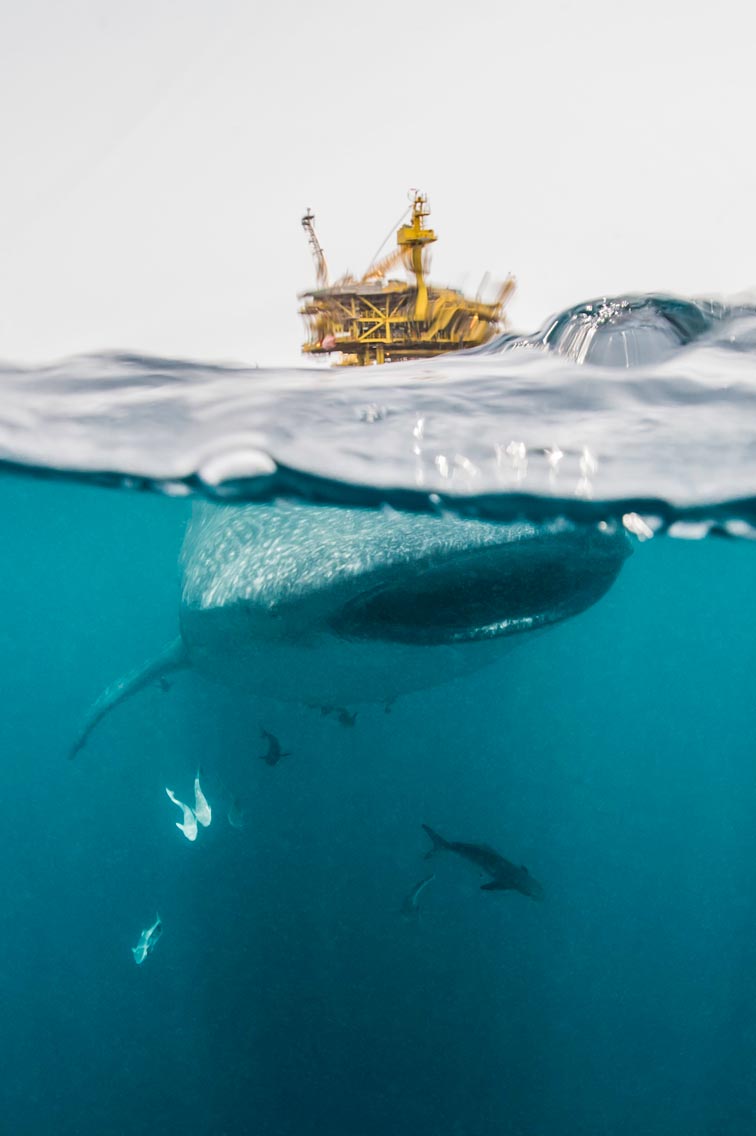
In 2007, a worker at a newly constructed oil platform in the Al Shaheen oil field, some 90km off the coast of Qatar in the Arabian Gulf, took photographs of a huge school of large sharks and posted the pictures online, but it wasn’t until 2010 that research student David Robinson from Heriot-Watt University in the UK (now a Research Associate at Marine Megafauna Foundation) came across the pictures and reported the aggregation to the scientific community.
Dr Robinson’s 2013 paper found that as many as 150 different sharks gathered in the area to feast on plankton beetween April and September, with the largest numbers visiting between May and August to feast on the eggs of spawning mackerel tuna.
At times, as many as 100 sharks were recorded within an area of just one sq km, with sizes ranging between four and eight metres and an average of 6.9m in length. The gathering was particularly noteworthy as the sharks were gathering in an area where water temperature can reach 34 degrees in the summer, previously thought to be too warm for whale sharks.
7. ST HELENA, SOUTH ATLANTIC
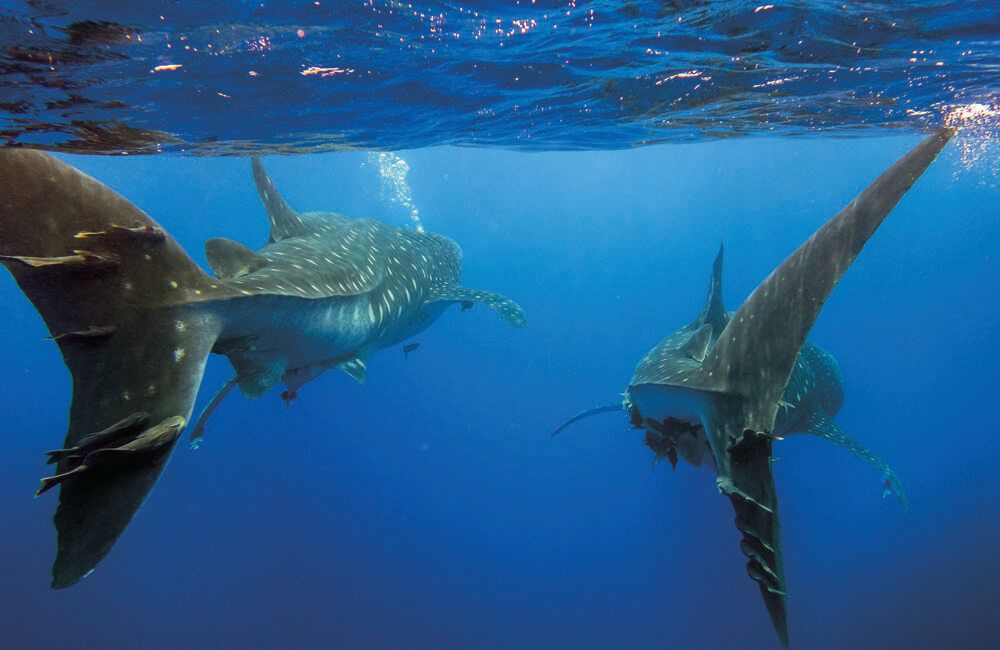
The British Overseas Territory of St Helena, an isolated island in the middle of the South Atlantic Ocean, is one of the most important whale shark aggregations so far known to science.
Between December and March each year, adult male and female whale sharks gather in almost equal numbers, the only place in the world where such a gathering is known to occur, suggesting that St Helena’s waters are a mating area for whales sharks.
St Helena is the only place in the world where whale sharks have been observed mating, with two separate reports confirming the behaviour.
Check out DIVE’s St Helena destination guide
8. ARI ATOLL, MALDIVES
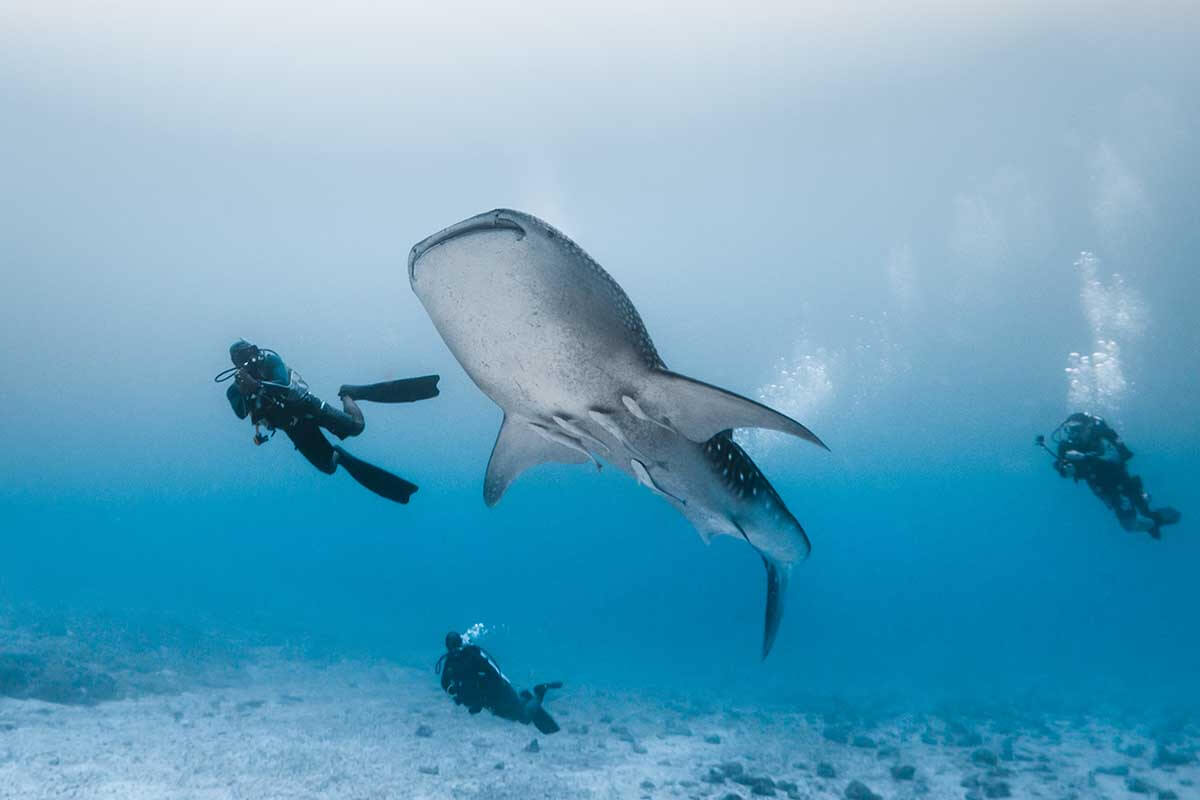
A regular star attraction on liveaboard trips in Ari Atoll in the Maldives is the gathering of whale sharks each summer. Mainly young males are frequently spotted around the spectacular Maldives’ reefs, home to an abundance of sharks and manta rays in between the high energy thila diving.
The best place to find the whale sharks is around South Ari, with regular sightings all through the year, and a peak between August to December, when there’s also a pretty good chance of bumping into some manta rays.
9. THE GALÁPAGOS ISLANDS
The overwhelming majority – up to 90 per cent – of all whale shark sightings in the Galápagos Marine Reserve are of pregnant females. Nobody knows why they head to Galápagos but tagging projects have revealed that the females stay for a short time before heading out into the Pacific and beyond the continental shelf.
Whale sharks are most commonly seen between June and November around the islands of Wolf and Darwin in the north of the Galápagos Marine Reserve.
10. DONSOL, LUZON, THE PHILIPPINES

There are a number of places to spot whale sharks in the Philippines, however, Donsol Bay is the largest of the aggregations and was the first whale shark tourism destination in Southeast Asia, where it has played an important role in whale shark identification and conservation since around 1998 – almost half of all whale shark identifications each year are made in Donsol.
Today, more than 25,000 visitors per year head to Donsol to swim with whale sharks. Strict limits have been imposed on operators with only a handful of boats allowed out at any given time, and only snorkelling permitted among the sharks.
Most of the sharks are male, with sizes ranging from 2 to 10m in length; a mixture of juvenile and adult animals, with an average of 6.5m. The season for sightings is between December and June, with a peak around March and April.


